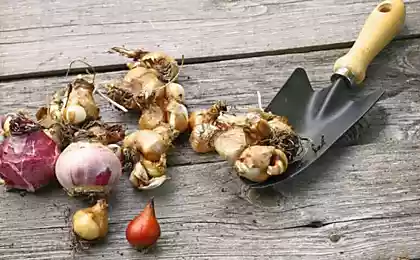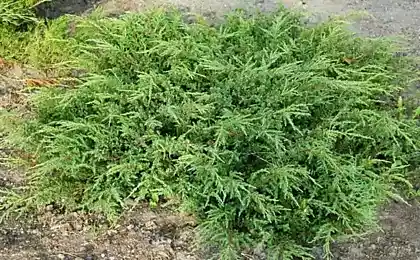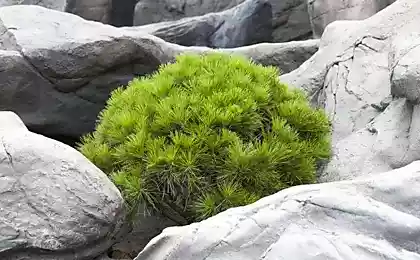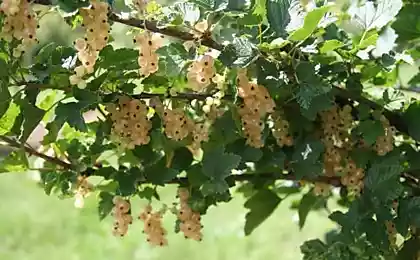143
Why plant juniper near the house?
Planting a juniper for many seems quite a painstaking occupation. However, it is actually quite easy to deal with it.
And today's edition. "Site" I will gladly tell you about all the nuances of a proper juniper landing. And also share tips for proper care of this wonderful plant.
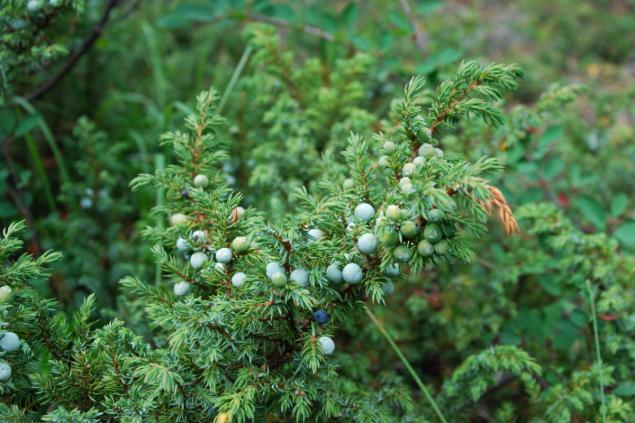
To grow this unpretentious shrub in your garden, you must first choose the right place.
It is important to know that shading is tolerated only by some varieties of juniper. Most species of this shrub take root only in sunny areas.
752239
If still there is no way to provide the plant with a sufficient amount of light, it is better to immediately choose a kind of juniper that can withstand unusual conditions. It can be horizontal juniper or Chinese.
It is also important to ensure that the bush is sufficiently protected from the wind. So, for example, when landing a juniper in the autumn, it is necessary to install a frame shelter, which will perform a protective function.
By the way, the juniper should be planted from early April to mid-September.
Preparation of the seedling for planting Before direct planting of the shrub, it is necessary to remove the dry needles at its base. If there are damaged shoot tips on the seedling, they should also be removed.
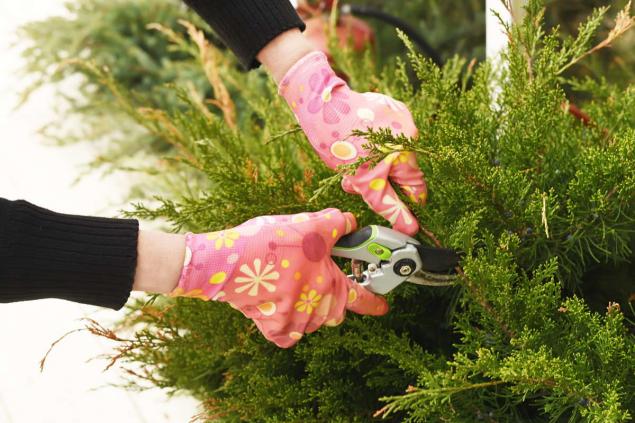
In order for the plant to take root in a new place, it must be pre-soaked in a stimulant of root formation. At the same time, the soaking container should be so large that it is calmly placed and completely immersed in the solution of the container with a seedling.
Direct landing of juniper Planting pit must be abundantly poured with cold water. Further, in its very center, it is necessary to make a depression corresponding to the root coma of the seedling.
Then carefully remove the juniper from the container and slightly straighten the roots of the plant. Place the seedling in the pit must be so that the root neck rises approximately 3 cm above ground level.
After that, we fill the voids with earth and water the bush with cold water.
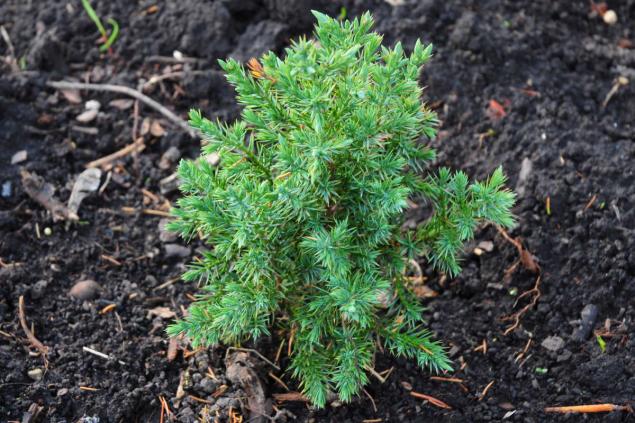
It is worth noting that a seedling with a vertical or spreading crown shape is better tied with a soft rope to wooden pegs.
And in the end it remains only to mulch the trunk circle with peat (layer approximately 4 cm).
Care for juniper after planting To coniferous seedlings do not turn yellow, it is necessary to provide them with decent care.
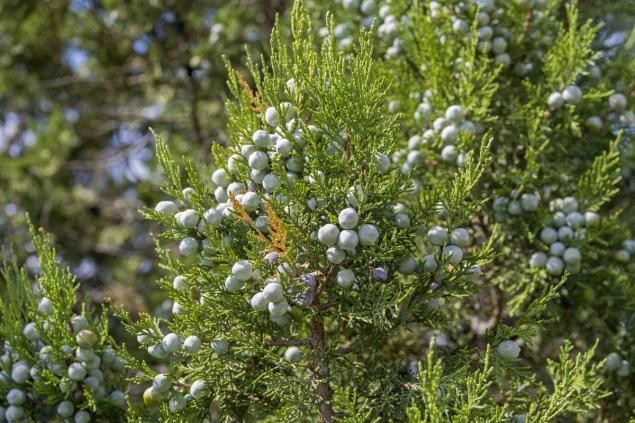
So, a week after planting the seedling in the ground, it is necessary to pour it with a solution of fungicide. This procedure will ensure disinfection of the soil and protect the shrub from unwanted diseases.
Juniper loves moisture, and therefore, regardless of weather conditions, it is necessary to water 16-17 liters of water once a week.
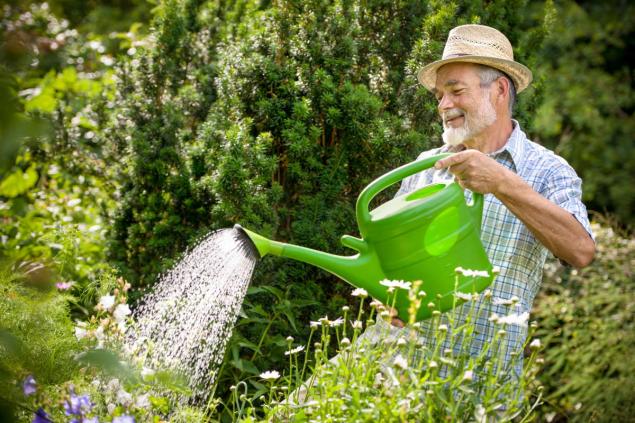
In addition to water, the young plant also needs to be watered twice throughout the month with a stimulant of root formation. And at the end of summer, you should fertilize the soil with a special mineral for coniferous plants and re-mulch the trunk circle.
It is believed that juniper shrub is able to protect the courtyard from evil spirits. According to legend, before entering the yard, evil spirits will have to count all the needles, and due to the fact that there are too many, it is almost impossible to do this.
In addition, people believe that juniper scares away diseases and all sorts of ailments from the owners of the plot on which it grows.
“If you cut off a twig from a young bush, light it and carry it around the house, misfortunes will bypass the site,” reads another popular sign.
Juniper branches left on the windowsill attract positive energy to the house and clean the aura of the home.
And accidentally fell into a purse or pocket juniper cone during the journey portends good luck and a favorable return home.
And today's edition. "Site" I will gladly tell you about all the nuances of a proper juniper landing. And also share tips for proper care of this wonderful plant.

To grow this unpretentious shrub in your garden, you must first choose the right place.
It is important to know that shading is tolerated only by some varieties of juniper. Most species of this shrub take root only in sunny areas.
752239
If still there is no way to provide the plant with a sufficient amount of light, it is better to immediately choose a kind of juniper that can withstand unusual conditions. It can be horizontal juniper or Chinese.
It is also important to ensure that the bush is sufficiently protected from the wind. So, for example, when landing a juniper in the autumn, it is necessary to install a frame shelter, which will perform a protective function.
By the way, the juniper should be planted from early April to mid-September.
Preparation of the seedling for planting Before direct planting of the shrub, it is necessary to remove the dry needles at its base. If there are damaged shoot tips on the seedling, they should also be removed.

In order for the plant to take root in a new place, it must be pre-soaked in a stimulant of root formation. At the same time, the soaking container should be so large that it is calmly placed and completely immersed in the solution of the container with a seedling.
Direct landing of juniper Planting pit must be abundantly poured with cold water. Further, in its very center, it is necessary to make a depression corresponding to the root coma of the seedling.
Then carefully remove the juniper from the container and slightly straighten the roots of the plant. Place the seedling in the pit must be so that the root neck rises approximately 3 cm above ground level.
After that, we fill the voids with earth and water the bush with cold water.

It is worth noting that a seedling with a vertical or spreading crown shape is better tied with a soft rope to wooden pegs.
And in the end it remains only to mulch the trunk circle with peat (layer approximately 4 cm).
Care for juniper after planting To coniferous seedlings do not turn yellow, it is necessary to provide them with decent care.

So, a week after planting the seedling in the ground, it is necessary to pour it with a solution of fungicide. This procedure will ensure disinfection of the soil and protect the shrub from unwanted diseases.
Juniper loves moisture, and therefore, regardless of weather conditions, it is necessary to water 16-17 liters of water once a week.

In addition to water, the young plant also needs to be watered twice throughout the month with a stimulant of root formation. And at the end of summer, you should fertilize the soil with a special mineral for coniferous plants and re-mulch the trunk circle.
It is believed that juniper shrub is able to protect the courtyard from evil spirits. According to legend, before entering the yard, evil spirits will have to count all the needles, and due to the fact that there are too many, it is almost impossible to do this.
In addition, people believe that juniper scares away diseases and all sorts of ailments from the owners of the plot on which it grows.
“If you cut off a twig from a young bush, light it and carry it around the house, misfortunes will bypass the site,” reads another popular sign.
Juniper branches left on the windowsill attract positive energy to the house and clean the aura of the home.
And accidentally fell into a purse or pocket juniper cone during the journey portends good luck and a favorable return home.
